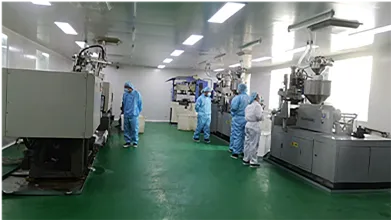https://www.wahmg.com/)">
petri dishes 100x15mm
petri dishes 100x15mm
Exploring the Versatility of 100x15mm Petri Dishes
Petri dishes, often considered a staple in laboratories around the world, have long been essential tools for microbiologists and researchers. Among the various sizes available, the 100x15mm Petri dish stands out as one of the most commonly used. This size strikes an optimal balance between surface area and depth, making it ideal for a multitude of applications in microbiology, cell culture, and other fields of life sciences.
Design and Materials
Typically made from high-quality glass or polystyrene, a 100x15mm Petri dish features a flat, circular base with a slightly raised rim. This construction allows for easy handling and stacking, while the smooth surface ensures that experiments can be conducted with precision. The choice between glass and plastic often depends on the specific requirements of the experiment. Glass dishes can be sterilized and reused, making them environmentally friendly, whereas plastic dishes are lightweight and convenient for single-use applications.
Applications in Microbiology
The primary use of Petri dishes is in the culture of microorganisms. Researchers often use them to grow bacteria, fungi, and other microbial colonies. The 100x15mm size is particularly advantageous for isolating microbial types due to its adequate surface area for spreading different types of agar, such as nutrient agar or selective media, to favor the growth of specific organisms. By inoculating the media with a sample and allowing it to incubate, scientists can observe growth patterns, morphology, and other characteristics that are crucial for identification and classification.
Cell Culture and Other Uses
petri dishes 100x15mm

Beyond microbiology, 100x15mm Petri dishes are also employed in cell culture studies. They provide a platform for growing eukaryotic cells under controlled conditions, allowing researchers to investigate various biological processes, drug responses, and cellular interactions. The size is suitable for experiments requiring a moderate number of cells, making it a practical choice for preliminary studies before scaling up to larger formats.
In addition to scientific research, these Petri dishes find applications in education and demonstrations. They serve as excellent tools for teaching students about microbiology, allowing them to visualize microbial growth and understand fundamental concepts of aseptic technique. In arts and crafts, some creative minds even repurpose Petri dishes for aesthetic creations, like terrariums or decorative displays.
Sterilization and Reusability
The ability to easily sterilize glass Petri dishes using an autoclave or other sterilization methods enhances their utility. Reusable glass dishes help reduce waste and can be an economical choice for laboratories that require numerous cultures over time. Conversely, plastic dishes are often pre-sterilized and sealed, making them ready for immediate use, which can be beneficial for rapid workflows.
Conclusion
The 100x15mm Petri dish is an invaluable component in a researcher’s toolkit, supporting a broad range of scientific endeavors. Its versatility extends beyond traditional applications, making it useful in educational settings and creative arts. Whether in a laboratory or an educational institution, the significance of Petri dishes in advancing scientific knowledge cannot be overstated. As we continue to explore the microscopic world, these simple yet effective tools will remain at the forefront of discovery and innovation in the life sciences.
-
Wholesale Plastic Juice Bottles with Caps 16 oz Options Available Bulk Packaging SolutionsNewsJun.10,2025
-
Laboratory Apparatus Reagent Bottle – Durable & Chemical Resistant Bottles for Safe StorageNewsJun.10,2025
-
Squeezable Dropper Bottles Durable, Leak-Proof & CustomizableNewsMay.30,2025
-
Affordable Plastic Petri Plates Sterile & Disposable Lab-GradeNewsMay.30,2025
-
Eye Dropper Caps Precision 24/410 & Plastic Bottle-Compatible TipsNewsMay.30,2025
-
Affordable Mini Spray Bottle Price & Wholesale Deals Shop NowNewsMay.29,2025





















